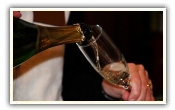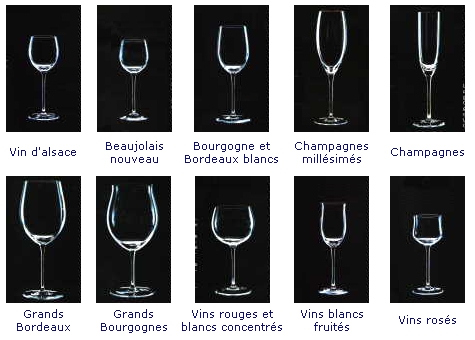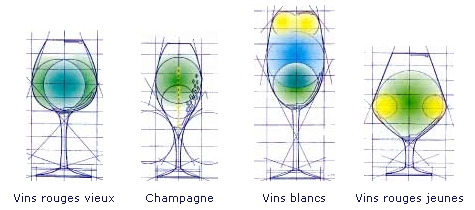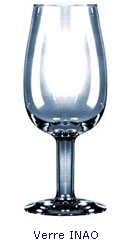The wine glasses

Introduction
A wine glass is a type of glass stemware which is used to drink and taste wine. It is generally composed of three parts:
- the bowl
- the stem
- the foot
Browse this collection of wine hampers that are specially made to surprise any wine connoisseur for any occasion.
Proper Use
It is important to note the most obvious, but often most neglected, part of the wine glass-the stem. The proper way to drink from the wine glass, especially when drinking white or otherwise chilled wine, is to grasp it by the stem and drink. The purpose of this is so the temperature of the wine is not affected when holding the glass. This is achieved because the stem is not in direct contact with the wine. It would be more difficult to control the temperature of the wine if one held the glass by the bowl because it is in direct contact with the wine. Also, holding the glass by the bowl will leave fingerprints, which can distort the visual appearance of the wine when examining the clarity and colour of the wine. Last but not least, the proper sound when clinking glasses requires them to be held by the stem.
Materials
Wine glasses made of fused or cut glass will often interfere with the flavor of the wine,[citation needed] as well as creating a rough, thick lip, from which it is not as pleasurable to drink.[citation needed] Blown glass results in a better vessel, with a thinner lip, and is usually acceptable for casual wine drinkers.[citation needed] High quality wine glasses are often made of lead crystal, which is not technically crystal, but is merely called it through convention. Lead crystal glasses' advantages are primarily aesthetic, having a higher index of refraction, thus changing the effect of light passing through them. They are also heavier. Using lead in the crystal matrix also offers several advantages in the material's workability during production. Wine glasses are generally not colored or frosted as this would impede the appreciation of its colour. An exception to this rule is the hock glass. see below.
Shapes
The shape of the glass is also very important, as it concentrates the flavor and aroma (or bouquet) to emphasize the varietal's characteristic. One common belief is that the shape of the glass directs the wine itself into the best area of the mouth from the varietal. Generally, the opening of the glass is not wider than the widest part of the bowl. The stem of a glass provides a way to hold the glass without warming the wine from body heat. Visually, a stem prevents fingerprints from smearing the glass. A new trend for wine glasses is the "stemless" wine glass which come in a variety of sizes and shapes as well. These glasses are typically more casual than their traditional counterparts, as they negate the benefits of using stemmed wine glasses.. Except for the wine connoisseur, wine glasses can be divided into three types: red wine glasses, white wine glasses, and champagne flutes.

Red wine glasses
Glasses for red wine are characterized by their rounder, wider bowl, which gives the wine space to breathe. Red wine glasses can have particular styles of their own, such as
- >Bordeaux glass: tall with a broad bowl, and is designed for full bodied red wines like Cabernet and Merlot as it directs wine to the back of the mouth.
- Burgundy glass: broader than the Bordeaux glass, it has a bigger bowl to accumulate aromas of more delicate red wines such as Pinot Noir. This style of glass directs wine to the tip of the tongue.

White wine glasses
White wine glasses are generally narrower, although not as narrow as champagne flutes, with somewhat straight or tulip-shaped sides. The narrowness of the white wine glass allows the chilled wine to retain its temperature for two reasons:
- The reduced surface area of the glass (in comparison to red wine glasses) means less air circulating around the glass and warming the wine.
- The smaller bowl of the glass means less contact between the hand and the glass, and so body heat does not transfer as easily to the wine.
Champagne flutes
Champagne flutes are characterised by a long stem with a tall, narrow bowl on top. The shape is designed to keep sparkling wine desirable
during its consumption. The glass is designed to be held by the stem to help prevent the heat from the hand from warming the champagne.
The bowl itself is designed in a manner to help retain the signature carbonation in the beverage. This is achieved by reducing the surface
area at the opening of the bowl.
Champagne flutes are often used at formal engagements, such as award ceremonies and weddings.
Sherry glasses
A sherry glass (or copita) is drinkware generally used for serving aromatic alcoholic beverages, such as sherry, port, aperitifs, and liqueurs, and layered shooters. An ISO-standard sized sherry glass is 120 millilitres (4.2 imp fl oz; 4.1 US fl oz). The copita, with its aroma-enhancing narrow taper, is a type of sherry glass.
INAO glasses




 Regions of France
Regions of France Regions of Spain
Regions of Spain Regions and areas from the world
Regions and areas from the world